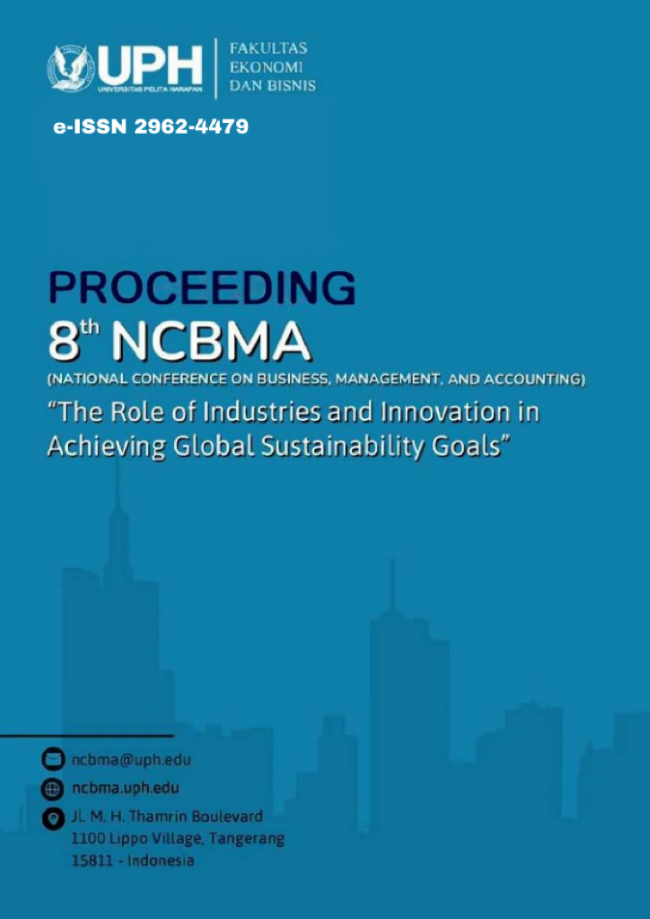ENHANCING JOB PERFORMANCE: EXPLORING THE IMPACT OF PERSON-JOB FIT, JOB AUTONOMY, AND WORK-LIFE BALANCE
Schlagworte:
Employee, company, job, performance, autonomy, balanceAbstract
The examination in this research investigates the relationship between the employee’s performance to the person-job fit and job autonomy with work-life balance being the variable of interest. Using the quantitative method, data in forms of surveys were collected from 166 employees and analyzed in SmartPLS to check for correlation between the variables. The findings indicate that work life balance strengthens the link between both person job fit and job autonomy and job performance. It stresses that employees who are granted autonomy perform better and are more innovative whereas with work life balance lowers tension and enhances concentration and performance. This study encourages the managers to take into account both the workers’ preferences as well as the targets of the company in order to increase the level of effectiveness and motivation. It adds to the body of HR management by suggesting a practical approach to achieve a higher productivity of the office and to improve the living standards of its employees.
Literaturhinweise
Bakker, A. B., & Demerouti, E. (2017). Job demands–resources theory: Taking stock and looking forward. Journal of Occupational Health Psychology, 22(3), 273–285. https://doi.org/10.1037/ocp0000056
Breaugh, J. A. (1985). The measurement of work autonomy. Human Relations, 38(6), 551–570. https://doi.org/10.1177/001872678503800604
Brough, P., Timms, C., O’Driscoll, M. P., Kalliath, T., Siu, O., Sit, C., & Lo, D. (2014). Work–Life Balance: a Longitudinal Evaluation of a New Measure Across Australia and New Zealand Workers. The International Journal of Human Resource Management, 25(19), 2724–2744. https://doi.org/10.1080/09585192.2014.899262
Creswell, J. W., & Creswell, J. D. (2018). Research design (5th ed.). SAGE Publications Koopmans, L., Bernaards, C., Hildebrandt, V., Van Buuren, S., Van Der Beek, A. J., & De
Vet, H. C. (2012). Development of an Individual Work Performance Questionnaire. International Journal of Productivity and Performance Management, 62(1), 6–28. https://doi.org/10.1108/17410401311285273
Greenhaus, J.H., Collins, K.M. & Shaw, J.D. (2003), “The relation between work-family balance and quality of life”, Journal of Vocational Behavior, Vol. 63 No. 3, pp.
510-531. Schmidt, G.B., Philip, J., Van Dellen, S.A. and Islam, S. (2023), “Gig worker organizing: toward an adapted attraction-selection-attrition framework”, Journal of Managerial Psychology, Vol. 38 No. 1, pp. 47-59.
Hackman, J.R. & Oldham, G.R. (1976), “Motivation through the design of work: Test of a theory”, Organizational Behavior and Human Performance, Vol. 16 No. 2, pp.
250-279.
Haar, J.M. (2013), “Testing a new measure of work-life balance: a study of parent and non-parent employees from New Zealand”, The International Journal of Human Resource Management, Vol. 24 No. 17, pp. 3305-3324.
Hair, J.F., Risher, J.J., Sarstedt, M. & Ringle, C.M. (2019), “When to use and how to report the results of PLS-SEM”, European Business Review, Vol. 31 No. 1, pp. 2-24.
Johari, J., Tan, F.Y. & Zulkarnain, Z.I.T. (2018), “Autonomy, workload, work-life balance and job performance among teachers”, International Journal of Educational Management, Vol. 32 No. 1, pp. 107-120.
Koopmans, L., Bernaards, C., Hildebrandt, V., Van Buuren, S., Van Der Beek, A. J., & De Vet, H. C. (2012). Development of an Individual Work Performance Questionnaire. International Journal of Productivity and Performance Management, 62(1), 6–28. https://doi.org/10.1108/17410401311285273
Kristof-Brown, A., & Guay, R. P. (2011). Person–environment fit. In S. Zedeck (Ed.), APA handbook of industrial and organizational psychology, Vol. 3. Maintaining, expanding, and contracting the organization(pp. 3–50). American Psychological
Association. https://doi.org/10.1037/12171-001
Kristof-Brown, A.L., Zimmerman, R.D., & Johnson, E.C. (2005), “Consequences of individuals' fit at work: A meta-analysis OF person–job, person–organization, person–group, and person–supervisor fit”, Personnel Psychology, Vol. 58 No. 2, pp. 281-342.
Littman-Ovadia, H., Oren, L. & Lavy, S. (2013), “Attachment and autonomy in the workplace: new insights”, Journal of Career Assessment, Vol. 21 No. 4, pp. 502-518.
Maisuradze, T. (2017). Crucial factors for better performance. International Scientific and Practical Conference “World Science, 24”. ISSN 2413-1032. from https://d1wqtxts1xzle7.cloudfront.net/58062362/11-12-libre.pdf
Peticca-Harris, A., DeGama, N. & Ravishankar, M.N. (2020), “Postcapitalist precarious work and those in the driver's' seat: exploring the motivations and lived experiences of Uber drivers in Canada”, Organization, Vol. 27 No. 1, pp. 36-59.
Pichault, F. and McKeown, T. (2019), “Autonomy at work in the gig economy: analysing work status, work content and working conditions of independent professionals”, New Technology, Work and Employment, Vol. 34 No. 1, pp. 59-72.
Saks, A. M., & Ashforth, B. E. (1997). A Longitudinal Investigation of The Relationships Between Job Information Sources, Applicant Perceptions of Fit, and Work Outcomes. Personnel Psychology, 50(2), 395–426. https://doi.org/10.1111/j.1744-6570.1997.tb00913.x
Schmidt, G.B., Philip, J., VanDellen, S.A. & Islam, S. (2023), “Gig worker organizing: toward an adapted attraction-selection-attrition framework”, Journal of Managerial Psychology, Vol. 38 No. 1, pp. 47-59.
Spreitzer, G. M., Cameron, L., & Garrett, L. (2017). Alternative work arrangements: Two images of the new world of work. Annual Review of Organizational Psychology and Organizational Behavior, 4, 473–499.
https://doi.org/10.1146/annurev-orgpsych-032516-113332
Stich, J.-F. (2021), "Flexible working and applicant attraction: a person–job fit approach", Personnel Review, Vol. 50 No. 1, pp. 358-378. https://doi.org/10.1108/PR-12-2019-0672
Urbanaviciute, I. & Lazauskaite-Zabielske, J. (2023), "The quality of working life from a person-centred perspective: linking job crafting, work environment types and work engagement", Personnel Review, Vol. 52 No. 8, pp. 1991-2007. https://doi.org/10.1108/PR-04-2021-0243
Young, D.K., McLeod, A.J. & Carpenter, D. (2023), "Examining the influence of occupational characteristics, gender and work-life balance on IT professionals' occupational satisfaction and occupational commitment", Information Technology & People, Vol. 36 No. 3, pp. 1270-1297. https://doi.org/10.1108/ITP-08-2020-0572
Downloads
Veröffentlicht
Ausgabe
Rubrik
Lizenz

Dieses Werk steht unter der Lizenz Creative Commons Namensnennung - Weitergabe unter gleichen Bedingungen 4.0 International.

